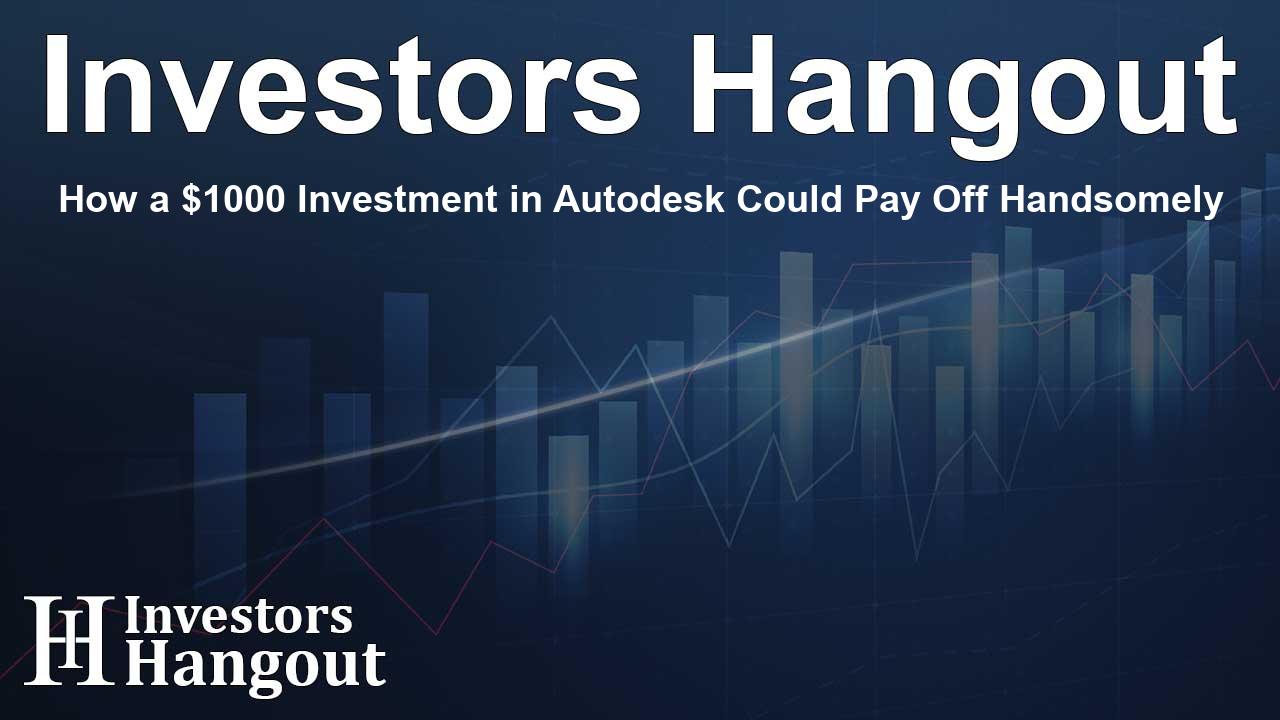How a $1000 Investment in Autodesk Could Pay Off Handsomely

Understanding Autodesk's Impressive Investment Growth
Autodesk (NASDAQ: ADSK) has shown remarkable resilience and growth, outperforming the market over the past 15 years. With an annualized return of 17.82%, Autodesk has carved a niche for itself as a strong player in the technology sector. Its current market capitalization stands at an impressive $65.26 billion, reflecting its continued success and investor confidence.
The Value of Long-Term Investing
Let’s consider the impact of long-term investing through the lens of Autodesk. If an investor had invested $1000 in Autodesk shares 15 years ago, that initial investment would have grown substantially over time, now valued at a staggering $11,969.17, assuming today’s share price of $302.82. This transformation highlights the power of compounding returns and the importance of sticking with investments over a durable horizon.
Compounding Returns Explained
The principle of compounding returns is an essential concept for any investor to grasp. Essentially, compounding allows your investments to grow not only on the initial amount invested but also on the returns that accumulate over time. In the case of Autodesk, this means that even a modest investment can blossom significantly, demonstrating that patience and strategy can indeed pay off.
Performance Analysis of Autodesk
Throughout the years, Autodesk has established a solid track record, consistently achieving better-than-average performance compared to the broader market. This steady growth can be attributed to its innovative products, strategic market positioning, and ability to adapt to changing technological landscapes. Investors can take confidence in the historical performance metrics, suggesting a strong likelihood of continued success.
The Future Outlook for Autodesk
Looking ahead, Autodesk aims to maintain its growth trajectory by focusing on cutting-edge technology, expanding its market reach, and enhancing user experience. Analysts remain optimistic about Autodesk's potential, and with a solid foundation, the company appears well-equipped to navigate any future challenges. This focus on innovation and development likely positions Autodesk favorably for sustained profitability and further growth.
Frequently Asked Questions
1. How much would an investment of $1000 in Autodesk be worth today?
An investment of $1000 in Autodesk 15 years ago would be worth approximately $11,969.17 today.
2. What is Autodesk's market capitalization?
Autodesk currently has a market capitalization of $65.26 billion.
3. What has been Autodesk's annualized return over the past 15 years?
Over the past 15 years, Autodesk has delivered an annualized return of 17.82%.
4. Why is compounding return important for investors?
Compounding returns allow investments to grow significantly over time, not just based on the principal but also on accumulated earnings.
5. What trends may affect Autodesk's future performance?
Autodesk's future performance may be influenced by its commitment to innovation, market expansion, and adaptation to technological advancements.
About Investors Hangout
Investors Hangout is a leading online stock forum for financial discussion and learning, offering a wide range of free tools and resources. It draws in traders of all levels, who exchange market knowledge, investigate trading tactics, and keep an eye on industry developments in real time. Featuring financial articles, stock message boards, quotes, charts, company profiles, and live news updates. Through cooperative learning and a wealth of informational resources, it helps users from novices creating their first portfolios to experts honing their techniques. Join Investors Hangout today: https://investorshangout.com/
Disclaimer: The content of this article is solely for general informational purposes only; it does not represent legal, financial, or investment advice. Investors Hangout does not offer financial advice; the author is not a licensed financial advisor. Consult a qualified advisor before making any financial or investment decisions based on this article. The author's interpretation of publicly available data shapes the opinions presented here; as a result, they should not be taken as advice to purchase, sell, or hold any securities mentioned or any other investments. The author does not guarantee the accuracy, completeness, or timeliness of any material, providing it "as is." Information and market conditions may change; past performance is not indicative of future outcomes. If any of the material offered here is inaccurate, please contact us for corrections.